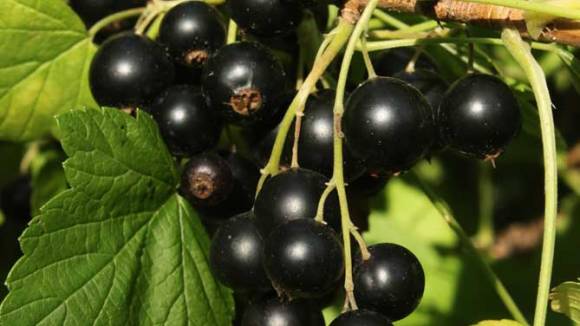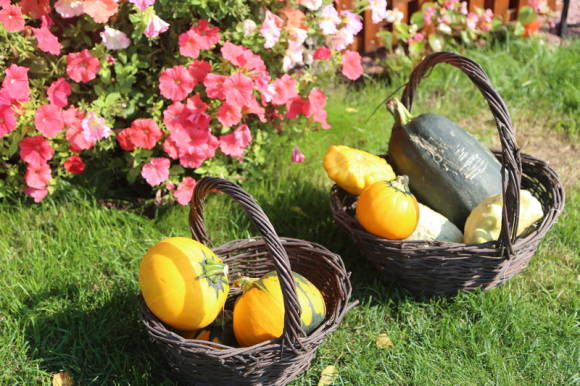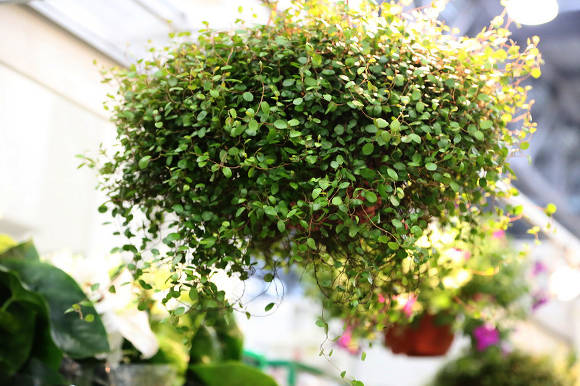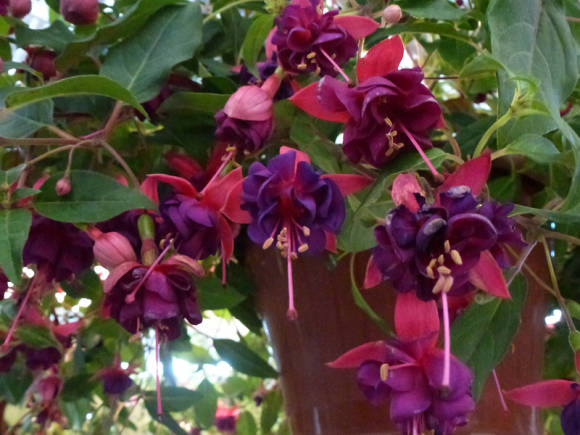 Fragrant violet Fragrant violet |
Violets are among the first to bloom in the spring. They are quite readily used as ornamental plants, decorative forms with different shades of flower color, peduncle height have been bred, but they are all united by a marvelous aroma that cannot be confused with other fragrant plants. But the violet is also a medicinal plant.
Fragrant violet (Viola odorata) is a perennial winter-green plant, and it comes out of winter ready to bloom, waiting only for the first warm days to come. And in Western Europe, where winters are not so harsh, and often snowless, it pleases with greenery all year round. Violet flowers are single, on stalks, with 5 dark purple, less often white petals. Blooms in April - early May and second time in late summer; bears fruit in June. The boxes in which the seeds are located droop and end up on the surface of the soil. The seeds are small with a special "tasty appendage" that ants love very much. Along the way, they are engaged in the distribution of violets.
All its names in various countries are somehow connected with its decorative qualities or wondrous aroma: Sweet violet (sweet violet), English Violet (english violet), Common violet (common violet), Garden violet (garden violet).
As an essential oil plant, the fragrant violet is cultivated in many countries of the world, but most often it is grown in France, as well as in Italy, Spain, and Algeria. The essential oil from flowers, leaves and roots is used in perfumery to obtain top-class perfumes.
In 1870, the famous perfume was first obtained from the flowers of this plant in Parma. "Vera Violetta". And in our
 Vera Violetta Vera Violetta |
days in Parma, you can buy a bottle of such a perfume, made according to a traditional recipe. In addition to this variety, a pale violet is used in perfumery, which is characterized by very abundant flowering.
All plant organs contain essential oil and resinous substances, which differ in composition and aroma. Currently, the main raw material is leaves containing a greenish oil known in perfumery under the name "Vert de violette" and with the aroma of fresh cucumbers.
The flowers are processed by extraction in organic solvents or by enfleurage, when the flowers are laid out one by one by hand on plates greased with fat, which traps and retains the released essential oil. As it was said in P. Suskind's novel "Perfume": "Flowers must die slowly ..."... Only in this case the highest quality essential oil is obtained, which is very expensive and rather rare. 1000 kg of flowers give only 31 g of the final product.
Medicinal properties of fragrant violets
Fragrant violet as a medicinal plant was used in ancient times. The ancient Greek physician Hippocrates, the Roman writer and scientist Pliny the Elder, the Arabian Abu Ibn Sina (Avicenna) and others mention its healing properties in their writings. The ancient Greeks considered it a symbol of fertility and used it in love drinks. Pliny recommended in the heat. In addition, the Romans scented wine with violet flowers. One of Mena in a poem "On the properties of herbs" (XI century) - a valuable monument of medieval medicine and botany, devoted a whole chapter to the medicinal properties of this plant, which begins with the following lines:"Roses with their beauty and the sparkling of lilies can neither aroma nor property with a fragrant argue with a violet"... The flowers are used in salads, for decorating cakes and jellies. Candied violet flowers are an exquisite delicacy. The Empress of Austria-Hungary Sisi (Elizabeth of Bavaria) always had a box of candied violets with her. They replaced her with sweets, harmful to the figure, about which she cared very much.
 Dried flowers and leaves Dried flowers and leaves |
In spring, flowers are collected separately, and in summer - the whole plant, along with roots and rhizomes.From flowers and leaves, a syrup is prepared, which is used for respiratory diseases.
A decoction of dry herbs has a laxative effect. For medicinal purposes, the fragrant violet uses the aerial part of the plant with flowers and roots, or only the roots. However, you need to be careful with it, since the root contains the alkaloid violin and therefore in large doses can cause stomach upset.
Fragrant violet is included in the BTF (British Herbal Pharmacopoeia) as an expectorant and antineoplastic (against neoplasms). It is used in homeopathy along with tricolor violet for cough and articular rheumatism. As shown by modern research, the plant contains saponins (they usually have an expectorant effect), bitterness, methyl ester of salicylic acid, which has antipyretic and anti-inflammatory effects. Therefore, the use of violets as an anti-cold and cosmetic plant has been fully justified since ancient times. In folk medicine, fragrant violets are also used for pulmonary diseases, to remove phlegm from the bronchi, to relieve spasmodic cough, especially in pediatric practice with whooping cough. The dose is the same as for renal treatment. A tincture of the aerial parts of a violet diluted with water is a good remedy for thrush.
In addition, the raw material contains a sum of flavonoids (kaempferol, quercetin), which have a beneficial effect on the state of blood vessels and also have an anti-inflammatory effect.
The aboveground part of the violet contains eugenol (an excellent antiseptic) and ferulic acid. Laboratory studies have been carried out, in which violet preparations have positively proven themselves for cancer, arthritis and even against the AIDS virus. An aqueous infusion of herbs with rhizome and roots is used for bronchitis, pneumonia, pulmonary tuberculosis, cystitis, urolithiasis and gallstone diseases, urethritis, metabolic disorders, rheumatism. In Bulgarian folk medicine, the fragrant violet is used to treat skin rashes, as a diuretic for sand and stones in the kidneys and bladder. Applied externally in the form of a compress, fresh leaves relieve inflammation and edema in case of purulent wounds, boils, dermatoses. When treating the kidneys, violet grass is usually mixed with bean shells, corn stalks (hairs), bearberry leaves, and birch leaves or buds, but violets can be used alone.
Application recipes
Whole plant decoction... 30 g of fresh raw materials or 10 g per 1 liter of water is taken orally for kidney stones, bladder as a means "crushing" them into the sand, as well as a diuretic, cleansing the renal pelvis, treating gout and rheumatism.
Cough syrup: Add 1 teacup of fresh or dried flowers and leaves to 0.5 liters of boiling water and leave for 12 hours. Then add 400 g of sugar and evaporate to a syrupy consistency. Take 1 teaspoon 2-3 times a day.
Tea: Brew 2 teaspoons of dry raw materials (leaves and flowers) with 1 cup of boiling water, leave for 5 minutes, strain and take 1 spoonful 2-3 times a day for coughing and as a blood purifier.
Infusion of flowers and syrup from them is prescribed as an anti-inflammatory, analgesic, sedative for pneumonia, convulsions, tinnitus, dizziness and memory impairment.
Flowers in the form of decoction and syrup prescribed as an expectorant for bronchitis; pleurisy, pneumonia, suffocation, as a sedative for convulsions and neuroses.
Prepare from flowers and leaves violet oil, which is used for coughs, conjunctivitis, blepharitis, arthritis, inflammation of the oral mucosa, including thrush, and also as a sedative for headaches, stomach pains, and ulcers. It is used in the form of ointments for stiff joints and tendons. To prepare it, fresh flowers and leaves are loosely placed in a jar, poured with refined sunflower oil, covered with a lid and placed in a warm and dark place.Insist for 2-3 days. Then the raw material is squeezed out, the oil is filtered off and a fresh portion of the raw material is poured in. And repeat the insistence. The resulting oil is stored in the refrigerator.
Seeds separately used very rarely. They have diuretic properties, irritate the mucous membrane of the digestive system, and in large doses as an emetic and laxative.
In aromatherapy, essential oil from the leaves is used to relieve headaches and dizziness, to calm down. In homeopathy, violet preparations are used for cramps, memory impairment, dizziness, tinnitus, myopia and angina pectoris.
For beauty
 Violet fragrant large-flowered Violet fragrant large-flowered |
The following varieties of fragrant violets are often grown in culture:
- "Queen Victoria" - one of the oldest varieties used for cutting;
- "Parma" - used to obtain essential oil;
- "Bechtles Ideal" - large-flowered variety used for forcing;
- "Konigin Charlotte" - with large flowers of a deep dark purple tone;
- "Red Charme" - with reddish-purple flowers;
- "Triumph" - with the largest flowers.
In the wild, the fragrant violet grows in deciduous forests, growing on the edges, glades and glades, southern mountain slopes overgrown with forest. It runs wild in culture and can be found in old parks, gardens, former estates, near roads. Prefers sunny places, loose, fertile soils. Will transfer slight shading.
The most important thing is that this is a medicinal plant that can be placed on the site almost regardless of the style of its design and lighting: in flower beds, borders, mixborders, on rocky hills, in rock gardens, in vases and when landscaping balconies. An underestimated but highly beneficial groundcover that looks good when paired with early spring bulbs.
You can even try forcing violets for spring cutting. To do this, from autumn the plants are planted in pots with a diameter of 10-12 cm or in boxes, which is preferable for cutting, kept in a cold greenhouse until mid-October, and then taken out to a cold greenhouse with a temperature of + 8-10ºC. When the plants start to grow, they are placed closer to the light, away from the heat source, and they begin to water abundantly, spray with warm water. They bloom in about a month.









